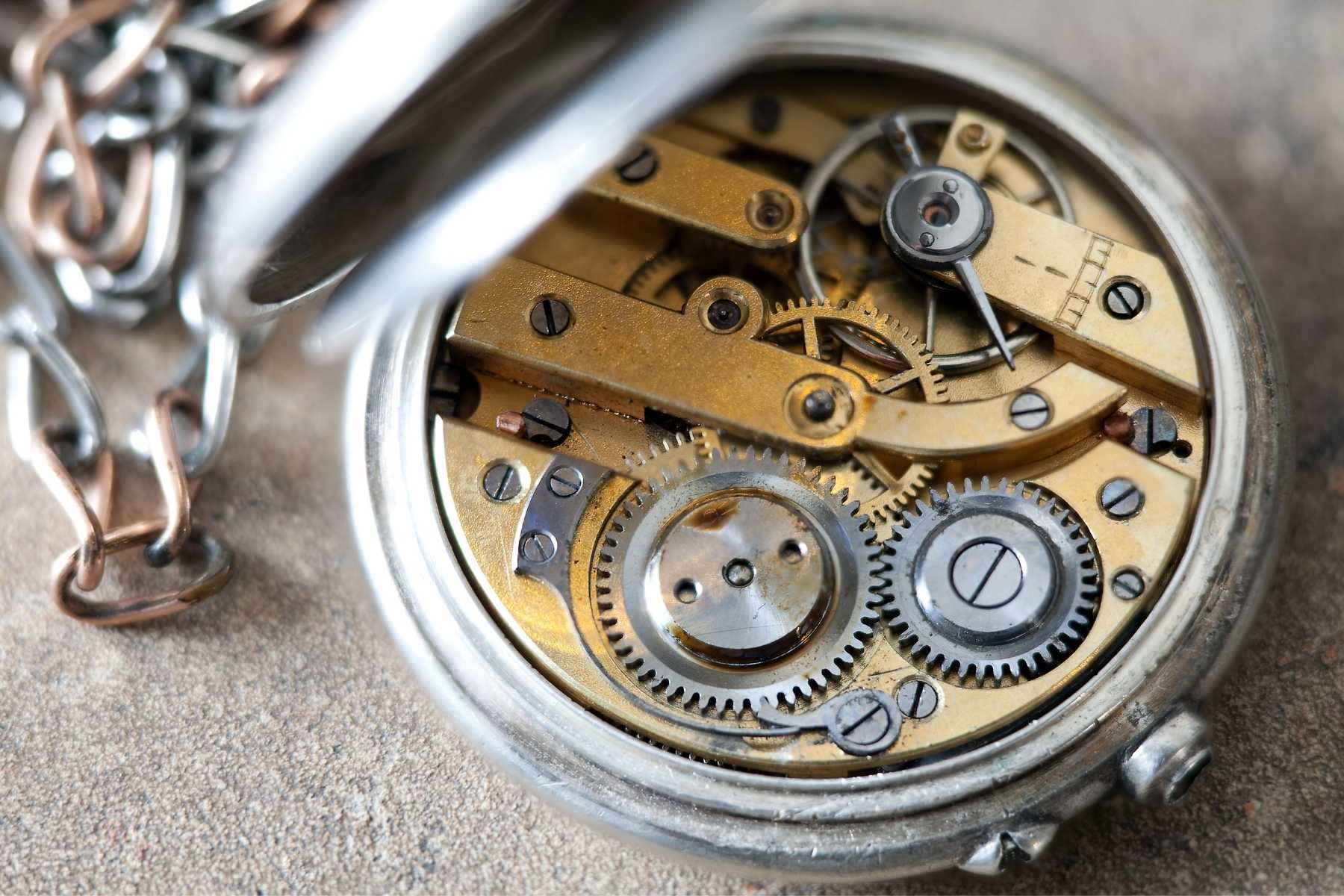You might not realize that the heart of a watch, its movement, can be as intricate as a symphony of tiny gears and springs working in harmony. Each component, starting with the crystal guarding the dial to the crown used for adjustments, plays a vital role in both the watch’s function and its style.
Understanding these parts can transform how you appreciate the craftsmanship of your timepiece. But what exactly makes one watch different from another? Let’s explore how these components come together to create the unique personality of your wristwatch.
The Watch Case
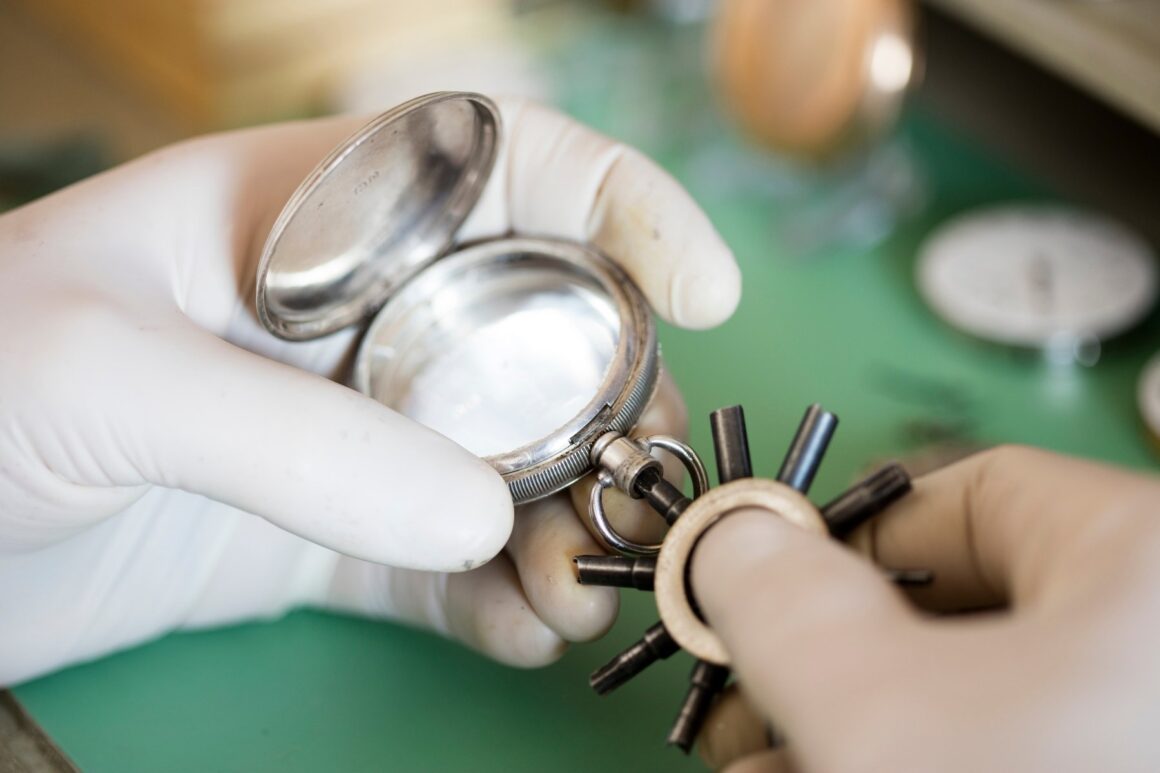
When examining the anatomy of a watch, you’ll find that the watch case plays an essential role in both form and function. It’s like the sturdy shell of a tiny time-traveling vessel. The case protects the inner workings from dust, moisture, and shock. Case materials range from classic stainless steel to luxurious gold or even lightweight titanium. Each choice affects not only the watch’s aesthetics but also its durability and water resistance. You wouldn’t want your watch to take a swim and fail, right?
Case shapes add to the watch’s personality. From round to square or even tonneau, the shape can speak volumes about your style. The case functions extend beyond mere protection. It also houses the crystal, bezel, and sometimes even extra features like a rotating bezel or chronograph pushers.
Speaking of extra features, case modifications can include everything from engraving to innovative designs that make your watch uniquely yours. These modifications might seem small, but they can change the entire look and feel of your timepiece. So, next time you strap on your watch, remember, the case is more than just a frame; it’s a masterpiece of engineering and design.
The Dial and Hands
While you gaze at your watch, the dial and hands immediately catch your eye, serving as the canvas and brush of this exquisite timepiece. The dial styles vary, from minimalist to intricate, each telling its own story. You might prefer a classic white dial or a bold black one, but the color combinations are endless, allowing the watch to reflect your personality. Hand designs can be sleek and simple or ornate and detailed, adding a touch of artistry to the watch face.
The marker types on the dial, whether they’re Roman numerals, Arabic numbers, or simple indices, guide your eye effortlessly around the clock. Each style offers a distinct character, shaping how you perceive time. Luminescent features are a handy touch, ensuring you can read the time even in the dark. They often glow with an enchanting hue, making your watch come alive at night.
Together, the dial and hands create a harmonious symphony of design and function. They’re not just there to tell time—they tell a story. So, the next time you check the hour, pause for a moment to appreciate the artistry on your wrist.
Movement Types
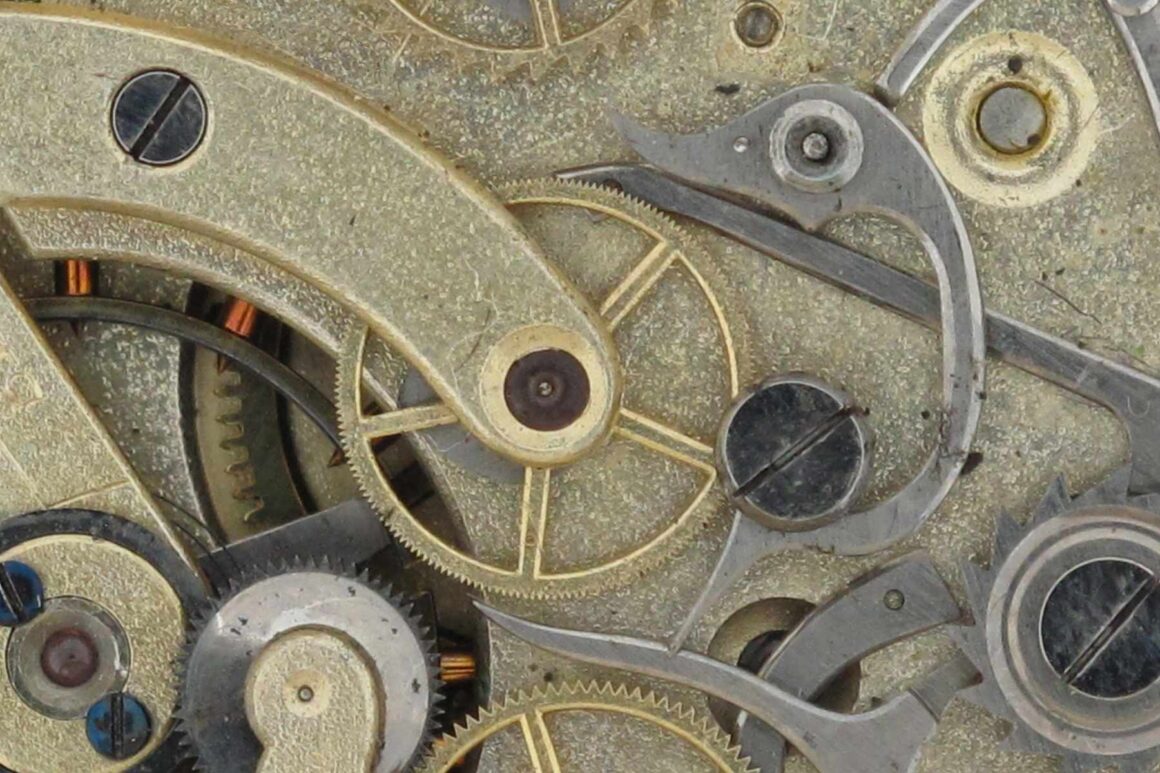
A watch’s heart lies in its movement, the mechanism that powers the ticking hands and keeps accurate time. You may think of a watch’s movement as its engine, with different types offering unique advantages. Quartz movement, for instance, uses a tiny, vibrating quartz crystal to keep time, ensuring excellent movement accuracy. It’s the go-to for those who value precision and low maintenance. Just pop in a battery, and you’re all set!
On the other hand, automatic movements are like magic. They harness the energy from your wrist’s motion to wind the watch, so there’s no battery needed. Just wear it, and it keeps ticking. If you prefer a more hands-on approach, manual winding might be up your alley. You’ll need to wind it yourself, a ritual some find oddly satisfying.
But wait, there’s more! Hybrid technology combines the best of both worlds, blending quartz accuracy with mechanical charm. They’re like the Swiss Army knives of watches, ready for anything. Whether you value the precision of quartz, the artistry of automatic, or the hands-on charm of manual winding, there’s a movement type that’ll suit your style perfectly.
The Crown
Every watch has a crown, a small yet significant component that plays an essential role in setting and adjusting time. You’ll find it on the side of the case, just waiting to be turned. Crowns come in various types, like the screw-down crown, which seals tightly, ideal for divers, and the push-pull crown, more common in everyday watches. Different crown types serve different needs, all contributing to the crown functions of adjusting time, date, and sometimes winding the watch.
The materials used in crowns can vary. You might encounter stainless steel, gold, or even titanium crowns, each offering a unique blend of durability and style. Choosing the right material often depends on your lifestyle needs and watch design preferences.
Now, a little crown history for you: The crown has been an integral part of watches since the 19th century, evolving from the simple winding keys of pocket watches to the more sophisticated designs we see today. As for crown maintenance, keep it clean and dry to guarantee it functions smoothly. Avoid pulling it out too forcefully. Remember, a well-maintained crown not only keeps your watch ticking but also adds a touch of charm to your wrist.
The Crystal
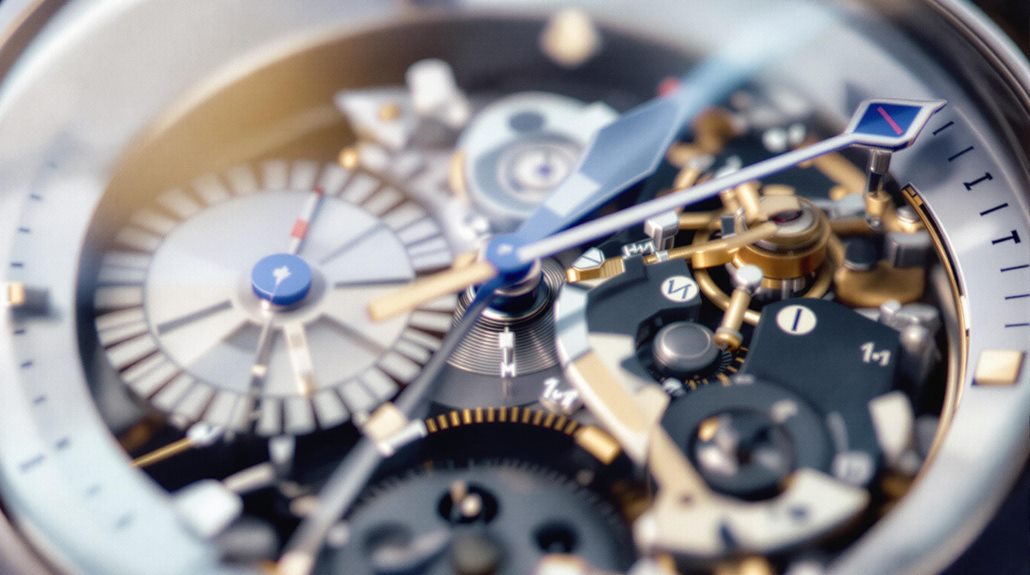
One of the most important components of a watch is the crystal. Think of it as the superhero shield for your watch face, protecting it against the wear and tear of everyday life. Watch crystals come in various materials, each with its own superpowers. Sapphire crystal is known for its impressive scratch resistance, making it a popular choice for high-end watches. If you’ve ever tried to scratch one, you’ll know it’s like trying to scratch a diamond—nearly impossible! On the other hand, acrylic crystals are more budget-friendly and can be polished to remove minor scratches, while mineral glass offers a middle ground.
Crystal shapes vary too, through flat and domed to faceted designs, each adding a unique flair to your watch. And if you’ve ever had trouble reading your watch in bright sunlight, you’ll appreciate an anti-reflective coating that reduces glare, making the time easy to see.
When it comes to maintenance tips, keep your crystal clean with a soft cloth to maintain its clarity. If scratches do occur, consider professional polishing or replacement based on the crystal material. Remember, a well-maintained crystal keeps your watch looking sharp!
The Bezel
The bezel’s essential role on a watch cannot be overstated. It’s akin to the cherry on top, only more functional. You might think of it as a mere decorative ring surrounding the watch face, but it does so much more. Bezel functions vary widely; they can help you keep track of time in unique ways. Some bezels rotate, perfect for diving watches, letting you track elapsed time underwater. Others are fixed, providing a stable frame that can still display useful information like a tachymeter scale.
Bezel materials are diverse, ranging from stainless steel and ceramic to gold and even diamonds. Each material offers different levels of durability and style, so you can really personalize your watch. Want something sporty? Go for ceramic. Looking for elegance? Gold or diamond-studded bezels might be your best bet.
Bezel styles add flair and function. From simple and minimalist to detailed with intricate engravings, there’s a bezel for every taste. So next time you glance at your watch, give the bezel a nod of appreciation. It is far more than just sitting there looking pretty—it’s busy doing its job, enhancing both form and function.
The Strap or Bracelet
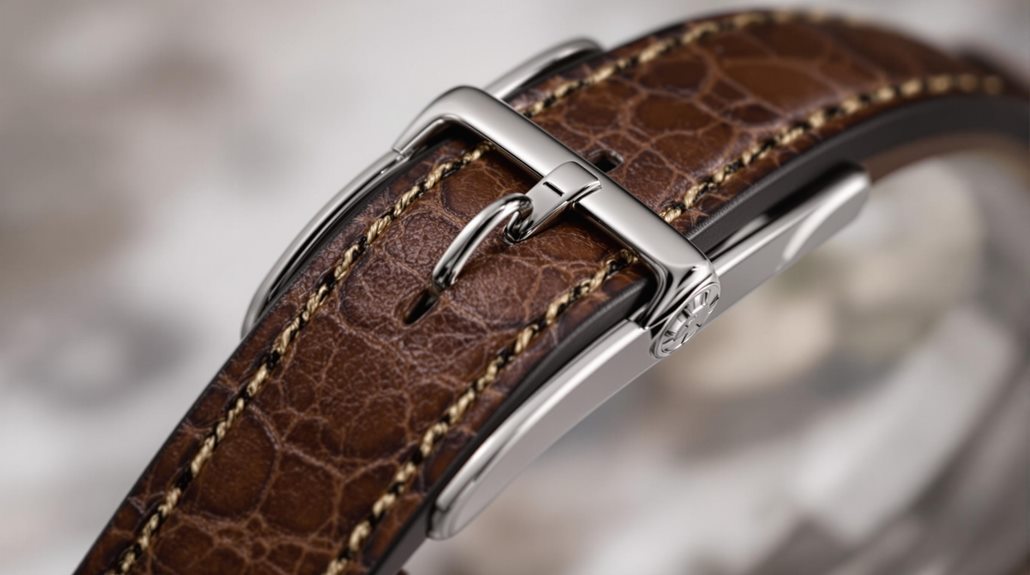
When it comes to choosing a watch, the strap or bracelet plays a pivotal role in defining its overall style and comfort. Let’s face it, nobody wants a watch that looks great but feels like a medieval torture device on your wrist. So, what should you consider? First, the strap materials. Leather, stainless steel, rubber, and even fabric offer different aesthetics and comfort levels. Leather adds a classic touch, while rubber thrives in sporty environments. Stainless steel bracelets exude elegance but can get heavy.
Bracelet styles vary, too. You’ve got your classic link bracelets, mesh designs, and even NATO straps for a casual vibe. Each style serves a different purpose and suits different outfits, so feel free to mix and match based on your mood or occasion.
Next up, adjustment methods. Some straps come with buckles, while others use deployment clasps or hidden push-button mechanisms. It’s all about what feels secure yet easy to adjust.
Don’t forget strap maintenance. Keep leather clean and conditioned, and make certain metal bracelets are free from dirt. A well-maintained strap enhances comfort factors, guaranteeing your watch feels like an extension of you, not an unwelcome guest.
The Back Case
While often overlooked, the back case of a watch plays an essential role in its functionality and durability. Think of it as the unsung hero, quietly guaranteeing your timepiece’s longevity. It isn’t merely there to cover the internal components; it provides vital water resistance features. Depending on the material choices—like stainless steel, titanium, or even ceramic—your watch can withstand different levels of water exposure. So, if you’re planning a deep-sea dive, confirm you’ve checked the specs!
But there’s more to the back case than merely keeping things dry. It’s also a canvas for creativity. Engraving techniques allow for personal touches, turning a simple watch into a cherished keepsake. From initials to intricate designs, the possibilities are endless.
When it comes to repair considerations, the back case can be a bit tricky. A tightly sealed case guarantees water resistance but might require professional help to open. And let’s not forget those vintage styles. A peek into the past can reveal intricate designs and materials that speak volumes about the era they came from. So, next time you glance at your watch, give a nod to its back case—it deserves the recognition!
The Escapement System
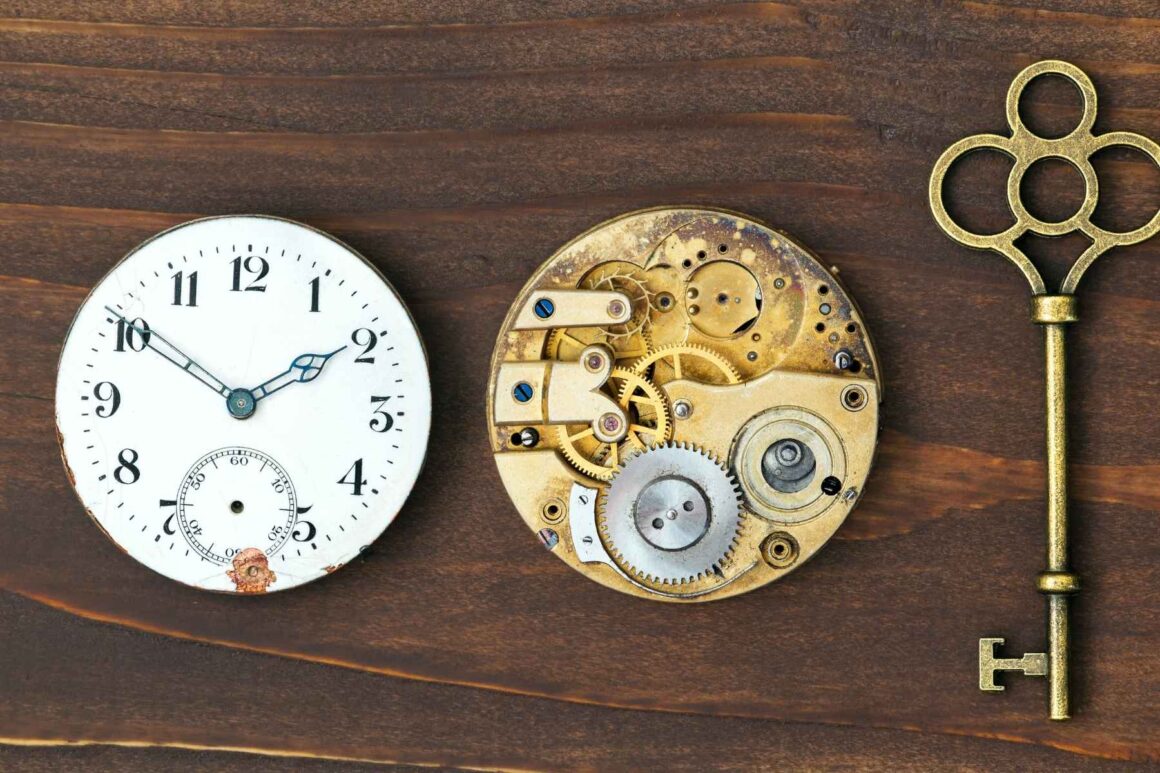
Envision the rhythmic dance of gears and levers, all working in harmony to keep your watch ticking accurately—welcome to the escapement system. It’s the heart of your timepiece‘s precision, guaranteeing that each tick and tock happens right on time. The escapement system’s history is rich, dating back to the 13th century, and its evolution has been essential to enhancing escapement accuracy.
Among the various escapement types, the lever escapement stands out as the most common today, prized for its reliability. But don’t overlook the coaxial escapement, known for reducing friction and extending the life of your watch. Speaking of life extension, escapement maintenance is vital. Regular cleaning and lubrication keep those tiny components dancing smoothly, much like maintaining the perfect tempo in a symphony.
Understanding escapement functions can be a bit like decoding a secret language. Simply put, it controls the release of energy from your watch’s mainspring, dictating the movement’s speed. This finely tuned process guarantees that time marches on accurately. So next time you glance at your wrist, remember the intricate ballet happening beneath the dial, all thanks to the escapement system’s genius design.
Wrapping up
Now that you’re familiar with the parts of a watch, here’s a fun fact: about 90% of quartz watches are more accurate than their mechanical counterparts. Isn’t that fascinating? Each component, starting with the intricate escapement system to the stylish strap, plays its part in making a watch both functional and fashionable. So, next time you adjust the crown or admire the dial, remember—you’re not just checking the time; you’re appreciating a tiny masterpiece on your wrist.

